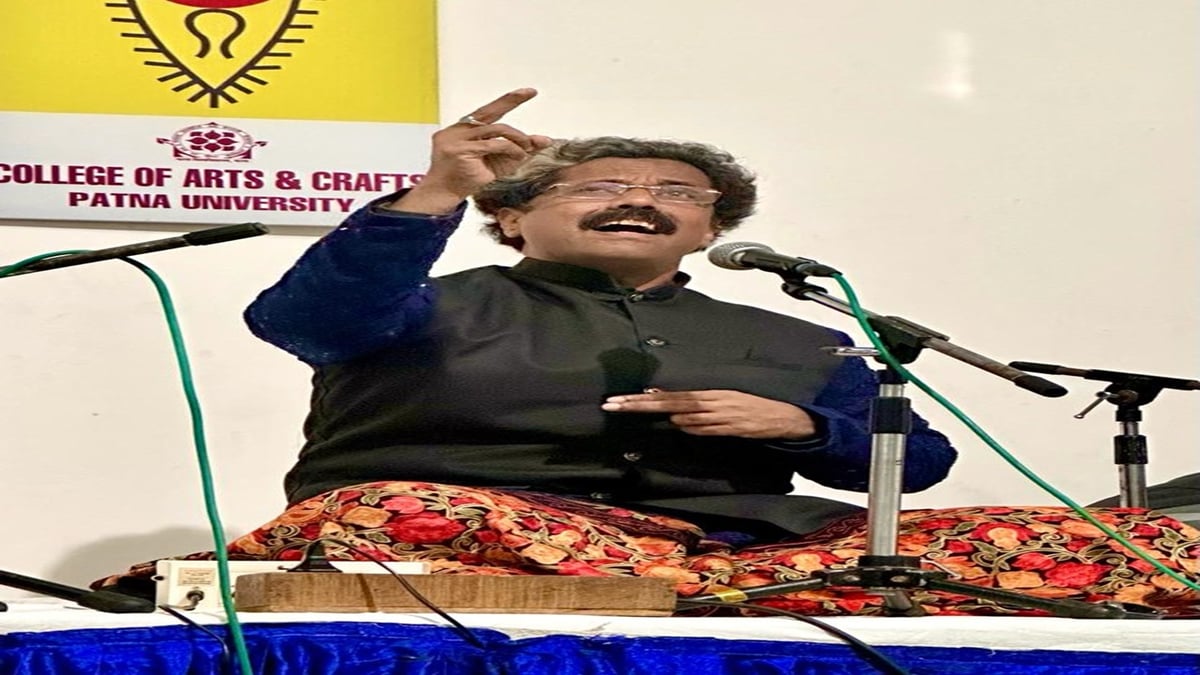Juhi Smita, Patna. Under the Lake Dame Series 2024, a program was organized by Speak Mackay to promote classical music in Art and Craft College. In this, Ustad Wasim Ahmed Khan of Agra Gharana enthralled everyone by presenting Raga Anandi. Young tabla player Arkodeep Das, who has performed on various stages in the country and abroad, accompanied him on the tabla, while Satanik Chatterjee was accompanying him on the harmonium. Before the presentation, Ustad Wasim Ahmed Khan said that the audience of every place is different. But, among today’s youth, music resides in their hearts which is very relevant. He told about Raga Nand. Dhrupad style aalaap of Nom Tom, sung to Bandish. Dhundhu Bari Saiyan Sakal Ban Dhandhu, Drut Ki Bandish presented in this raga. He forced everyone to clap by singing ‘Ajhun Na Aaye Shyam Badhu Din Beete’. During this time, many students were present along with Dr. Ajay Pandey, Principal of Art and Craft College.
Question- You are from Agra Gharana, so what are its special features?
Answer: Agra Gharana is the oldest Gharana in Khayal. Our Gharana comes from Dhrupad style which has nom-tom alap, taan pattern as per raga. The specialty is the method of presenting a Bandish (stable, melodious composition). We break the restriction into several parts. For example, if there is an interesting line in the antara, we use this line for bol taan (rhythmic pattern of notes that uses the words of bandish), bol bant, bol banava, bol vistaar etc. We do not have to create any artificial voice, but rather enhance the voice given by God.
Question: Is the Hindustani music we hear today a mixture of characteristics of different gharanas?
Answer- Yes of course. Very few people are left who are singing in connection with their family. Every family has its own characteristics. Earlier artists also adopted the characteristics of other gharanas and enriched their music. However, he retained a stamp of his family.
Question- Being a part of an ancient and prestigious family, what are your responsibilities? Do you have another generation to take charge?
Answer- This is a big responsibility. But I also feel proud that I learned this tradition from my ancestors. This is the reason why I am representing the 17th generation of this family. The most important aspect is to pass on this legacy to the next generation. I will involve my younger daughter in this tradition, although girls in our family are not involved in it. But I want to start it with my daughter. I have many disciples who are making their mark in the world of music.
Question: Is there any connection between spirituality and Indian classical music?
Answer: There is definitely a connection. Music is meaningless without spirituality. Our Bandhis address the Gods of any religion and request their mercy for the well-being of this world.
Question- How relevant is Indian classical music in the modern world?
Answer- It is relevant in the modern world. Classical singing has always been popular among the class people (who understand music). In all the reality shows, its singers have taken education from Guru or Utsad. This is the proof that classical has always existed and will always exist.
Question- Does the Guru-Shishya tradition still exist?
Answer: This is the existence whose example is my disciple sitting with me. I teach my students the same way I have learned from my teachers. My students stay with me and take music lessons.
Question: If you were not a professional musician, what career would you have chosen?
Answer- I would probably have been a cricket player. I was fond of this game and used to play it during my college days. Seeing me, many people address me as Kapil Dev.

